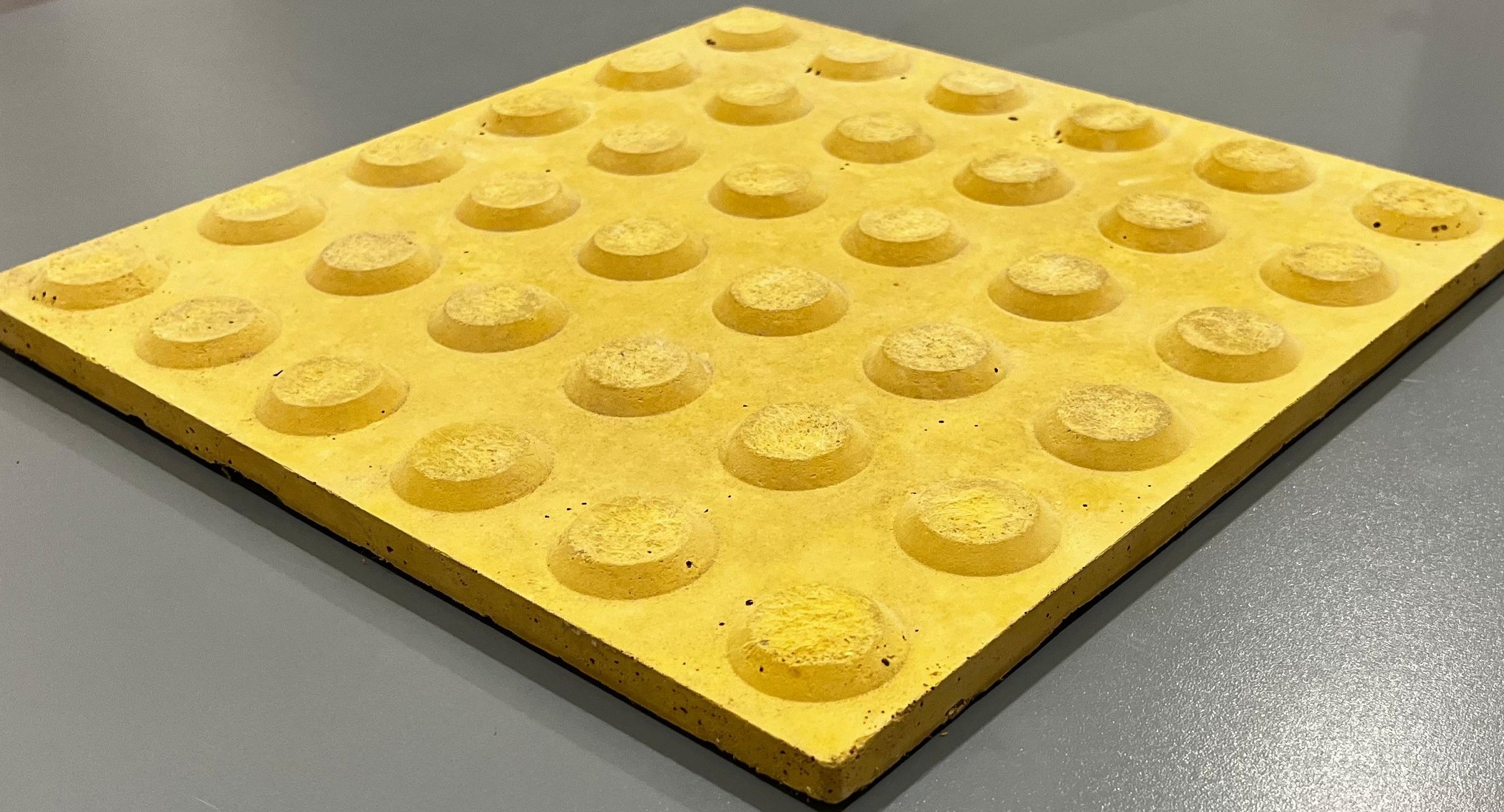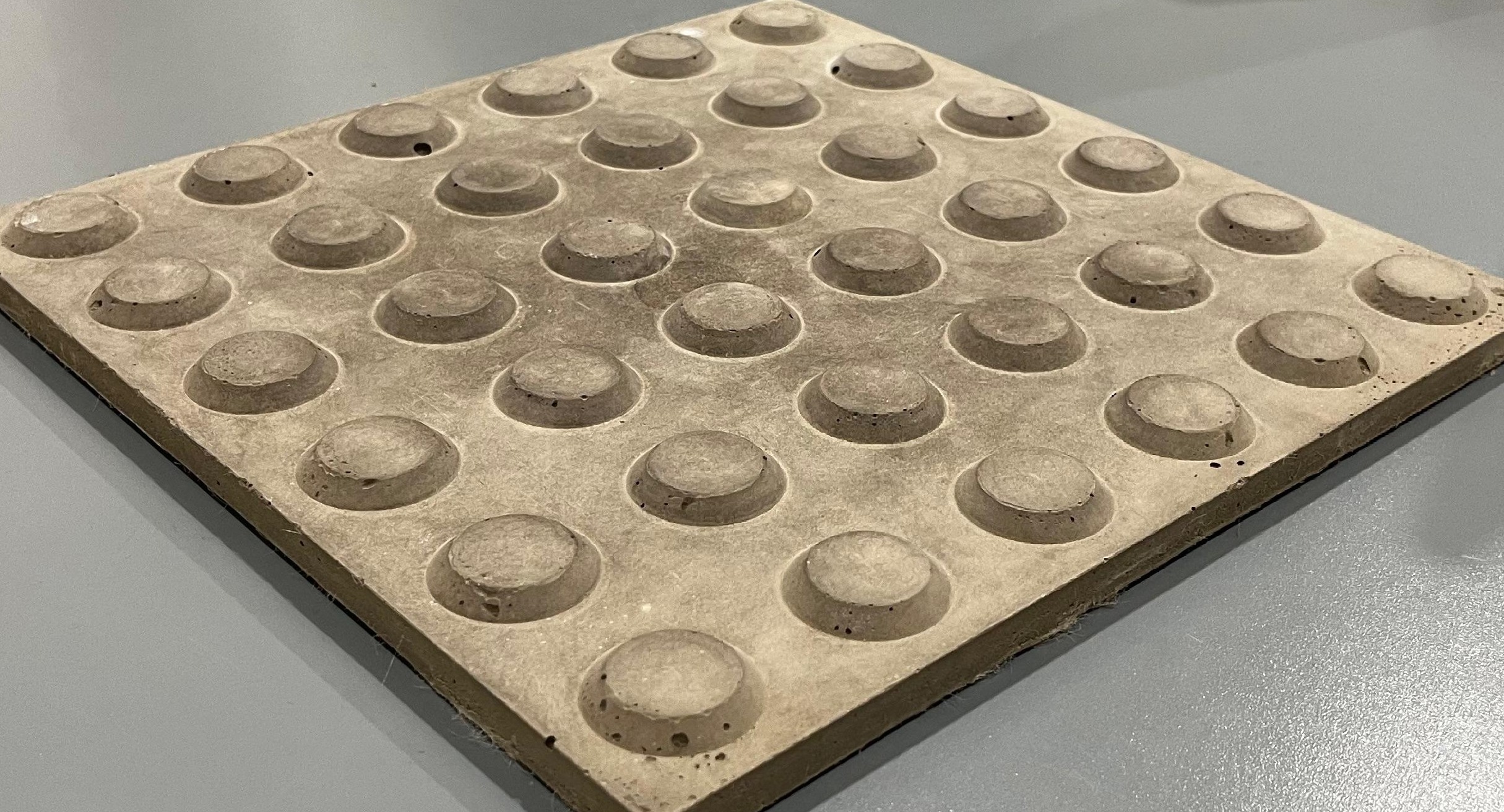Bendable Concrete Tactile Indicator
KEY INFORMATION
TECHNOLOGY OVERVIEW
Tactile indicators and flat tiles are typically made from porcelain-based or traditional concrete materials. Porcelain surfaces tend to be smooth and slippery, posing a safety risk for pedestrians, and they are also brittle, making them prone to damage. Traditional concrete, while more durable, is bulky and heavy, making installation challenging.
Bendable concrete tactile indicators offer a solution to the drawbacks of both materials. They are slip-resistant, durable, and lightweight, making them easier to install. It utilizes high-performance fiber-reinforced concrete that is designed using the micro-mechanics guided principles. The design focuses on suitable tailoring of fiber-cementitious matrix interface that enable tensile strain-hardening characteristics similar to metal. Under normal load conditions, bendable concrete exhibits stiffness comparable to traditional concrete. However, when overloaded, instead of fracturing suddenly, it deforms while continuing to bear the load, much like ductile metals that undergo plastic deformation after yielding. This material is exceptionally tough, with a fracture toughness comparable to that of aluminum alloys.
The technology owner is seeking potential partnerships for IP licensing. Potential partners include tile manufacturers and companies in related industries.
TECHNOLOGY FEATURES & SPECIFICATIONS
- Compressive strength: Around 50 MPa
- Flexural strength: 10-15 MPa, three to five times of traditional concrete
- Tensile strain capacity: Greater than 3%, several hundred times that of traditional concrete
- Improved skid resistance: Greater than 50 BPN
- Reduced tile thickness: Smaller than 12 mm compared to traditional concrete material at 40-60 mm
POTENTIAL APPLICATIONS
Potential applications include but not limited to tactile indicators and flat tiles for outdoor applications where high skid resistance, durability, and lightweight are of importance.
Market Trends & Opportunities
In Singapore, approximately 100,000 m² of tactile indicators are installed at conflict zones in major road junctions. These indicators are also widely used in similar zones at service road junctions within HDB estates, industrial parks, universities, schools, hospitals, train stations, and other public buildings. Additionally, an estimated 39,000 m² of tiles will be required for an upcoming footpath rejuvenation project, where flat tiles will be used to repave footpaths in areas across Singapore, including the Central Business District.
Unique Value Proposition
- Surface skid resistant: Provides more friction while walking, hence better footing compared to porcelain-based tactile indicators.
- Durable: Less prone to crack, chips or wear and tear compared to porcelain-based solutions, allowing for the creation of thin tactile indicators without the need for steel reinforcement.



